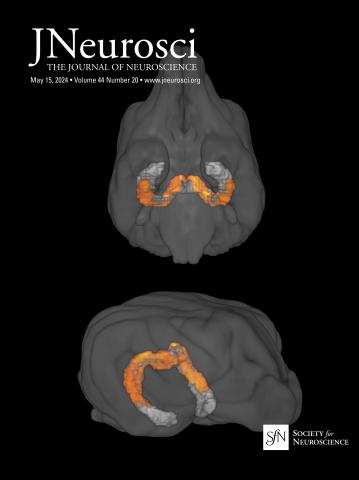Neural Synchrony and Consumer Behavior: Predicting Friends' Behavior in Real-World Social Networks.
IF 4.4
2区 医学
Q1 NEUROSCIENCES
引用次数: 0
Abstract
The endogenous aspect of social influence, reflected in the spontaneous alignment of behaviors within close social relationships, plays a crucial role in understanding human social behavior. In two studies involving 222 human subjects (Study 1: n = 175, 106 females; Study 2: n = 47, 33 females), we used a longitudinal behavioral study and a naturalistic stimuli neuroimaging study to investigate the endogenous consumer behavior similarities and their neural basis in real-world social networks. The findings reveal that friends, compared to nonfriends, exhibit higher similarity in product evaluation, which undergoes dynamic changes as the structure of social networks changes. Both neuroimaging and meta-analytic decoding results indicate that friends exhibit heightened neural synchrony, which is linked to cognitive functions such as object perception, attention, memory, social judgment, and reward processing. Stacking machine learning-based predictive models demonstrate that the functional connectivity maps of brain activity can predict the purchase intention of their friends or their own rather than strangers. Based on the significant neural similarity which exists among individuals in close relationships within authentic social networks, the current study reveals the predictive capacity of neural activity in predicting the behavior of friends.Significance Statement Understanding the endogenous aspects of social impact is critical for comprehending human social behavior. The current study provides novel evidence that close social relationships within real-world networks exhibit heightened behavioral and neural synchrony, and dynamically evolve with changes in social network structures. Using naturalistic stimuli and longitudinal studies, it is demonstrated that neural activity not only reflects shared cognitive functions, but also predicts purchase intentions of individuals and their close friends with greater accuracy than strangers. These findings uncover the neural basis of endogenous consumer behavior similarities and highlight the predictive capacity of brain activity in understanding and forecasting the behavior of individuals within close social connections. This research offers valuable insights into the intersection of neuroscience, social behavior, and consumer decision-making.神经同步性与消费者行为:预测现实社会网络中的朋友行为。
社会影响的内源性方面反映在密切的社会关系中自发的行为一致中,在理解人类社会行为方面起着至关重要的作用。在两项涉及222名人类受试者的研究中(研究1:n = 175, 106名女性;研究2:n = 47,33名女性),我们采用纵向行为研究和自然刺激神经成像研究来探讨现实社会网络中消费者行为的内源性相似性及其神经基础。研究结果表明,与非朋友相比,朋友在产品评价上表现出更高的相似性,这种相似性随着社交网络结构的变化而发生动态变化。神经成像和元分析解码结果都表明,朋友表现出高度的神经同步性,这与诸如物体感知、注意力、记忆、社会判断和奖励处理等认知功能有关。基于堆叠机器学习的预测模型表明,大脑活动的功能连接图可以预测他们的朋友或自己的购买意愿,而不是陌生人。基于真实社会网络中亲密关系个体之间存在的显著神经相似性,本研究揭示了神经活动在预测朋友行为方面的预测能力。理解社会影响的内生因素对于理解人类社会行为至关重要。目前的研究提供了新的证据,表明现实世界网络中的亲密社会关系表现出高度的行为和神经同步性,并随着社会网络结构的变化而动态演变。利用自然刺激和纵向研究表明,神经活动不仅反映了共同的认知功能,而且比陌生人更准确地预测了个人及其亲密朋友的购买意愿。这些发现揭示了内源性消费者行为相似性的神经基础,并强调了大脑活动在理解和预测密切社会关系中的个人行为方面的预测能力。这项研究为神经科学、社会行为和消费者决策的交叉提供了有价值的见解。
本文章由计算机程序翻译,如有差异,请以英文原文为准。
求助全文
约1分钟内获得全文
求助全文
来源期刊

Journal of Neuroscience
医学-神经科学
CiteScore
9.30
自引率
3.80%
发文量
1164
审稿时长
12 months
期刊介绍:
JNeurosci (ISSN 0270-6474) is an official journal of the Society for Neuroscience. It is published weekly by the Society, fifty weeks a year, one volume a year. JNeurosci publishes papers on a broad range of topics of general interest to those working on the nervous system. Authors now have an Open Choice option for their published articles
 求助内容:
求助内容: 应助结果提醒方式:
应助结果提醒方式:


